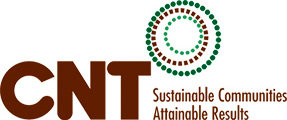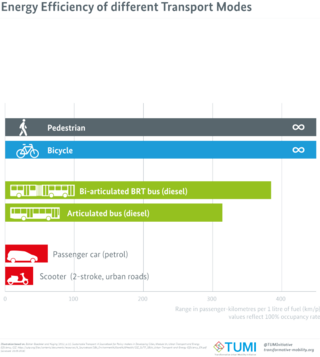Related Research Articles

Green building refers to both a structure and the application of processes that are environmentally responsible and resource-efficient throughout a building's life-cycle: from planning to design, construction, operation, maintenance, renovation, and demolition. This requires close cooperation of the contractor, the architects, the engineers, and the client at all project stages. The Green Building practice expands and complements the classical building design concerns of economy, utility, durability, and comfort. Green building also refers to saving resources to the maximum extent, including energy saving, land saving, water saving, material saving, etc., during the whole life cycle of the building, protecting the environment and reducing pollution, providing people with healthy, comfortable and efficient use of space, and being in harmony with nature. Buildings that live in harmony; green building technology focuses on low consumption, high efficiency, economy, environmental protection, integration and optimization.’

The Center for Neighborhood Technology (CNT) is a non-profit organization, headquartered in Chicago, Illinois, which is committed to sustainable development and urban communities.
Chicago Community Loan Fund (CCLF) is a certified community development financial institution (CDFI) that provides loans and grants to community development organizations engaged in affordable housing, social service and economic development initiatives in Chicago.

Environmental planning is the process of facilitating decision making to carry out land development with the consideration given to the natural environment, social, political, economic and governance factors and provides a holistic framework to achieve sustainable outcomes. A major goal of environmental planning is to create sustainable communities, which aim to conserve and protect undeveloped land.

Leadership in Energy and Environmental Design (LEED) is a green building certification program used worldwide. Developed by the non-profit U.S. Green Building Council (USGBC), it includes a set of rating systems for the design, construction, operation, and maintenance of green buildings, homes, and neighborhoods, which aims to help building owners and operators be environmentally responsible and use resources efficiently.

Green infrastructure or blue-green infrastructure refers to a network that provides the “ingredients” for solving urban and climatic challenges by building with nature. The main components of this approach include stormwater management, climate adaptation, the reduction of heat stress, increasing biodiversity, food production, better air quality, sustainable energy production, clean water, and healthy soils, as well as more anthropocentric functions, such as increased quality of life through recreation and the provision of shade and shelter in and around towns and cities. Green infrastructure also serves to provide an ecological framework for social, economic, and environmental health of the surroundings. More recently scholars and activists have also called for green infrastructure that promotes social inclusion and equity rather than reinforcing pre-existing structures of unequal access to nature-based services.

A green-collar worker is a worker who is employed in an environmental sector of the economy. Environmental green-collar workers satisfy the demand for green development. Generally, they implement environmentally conscious design, policy, and technology to improve conservation and sustainability. Formal environmental regulations as well as informal social expectations are pushing many firms to seek professionals with expertise with environmental, energy efficiency, and clean renewable energy issues. They often seek to make their output more sustainable, and thus more favorable to public opinion, governmental regulation, and the Earth's ecology.
This article provides examples of green building programs in the United States. These programs span the public, private, and non-profit sectors, and all have the goal of increasing energy efficiency and the sustainability of the built environment.

Land recycling is the reuse of abandoned, vacant, or underused properties for redevelopment or repurposing.
Green building on college campuses is the purposeful construction of buildings on college campuses that decreases resource usage in both the building process and also the future use of the building. The goal is to reduce CO2 emissions, energy use, and water use, while creating an atmosphere where students can be healthy and learn.
The California Sustainability Alliance is an organization funded by the California IOUs, to facilitate discussions between various industries on the issues of resource sustainability. The Alliance was set up in 2008 to help California meet its goals in facing Climate change in the State, in relation to energy, resources, and the environment. Efforts are directed at increasing and accelerating sustainable measures and strategies. The Alliance specifically focuses on energy efficiency, climate action, “smart growth” principles, renewable energy development, water-use efficiency, waste management, and transportation management within California.
Environmentally sustainable design is the philosophy of designing physical objects, the built environment, and services to comply with the principles of ecological sustainability and also aimed at improving the health and comfort of occupants in a building. Sustainable design seeks to reduce negative impacts on the environment, the health and well-being of building occupants, thereby improving building performance. The basic objectives of sustainability are to reduce the consumption of non-renewable resources, minimize waste, and create healthy, productive environments.
A sustainability organization is (1) an organized group of people that aims to advance sustainability and/or (2) those actions of organizing something sustainably. Unlike many business organizations, sustainability organizations are not limited to implementing sustainability strategies which provide them with economic and cultural benefits attained through environmental responsibility. For sustainability organizations, sustainability can also be an end in itself without further justifications.
LEED for Neighborhood Development (LEED-ND), where "LEED" stands for Leadership in Energy and Environmental Design, is a United States-based rating system that integrates the principles of smart growth, urbanism, and green building into a national system for neighborhood design. LEED certification provides independent, third-party verification that a development's location and design meet accepted high levels of environmentally responsible, sustainable development.
The California Green Building Standards Code is Part 11 of the California Building Standards Code and is the first statewide "green" building code in the US.

The Bren School of Environmental Science & Management is the graduate environmental studies school of the University of California, Santa Barbara.

Sustainable urbanism is both the study of cities and the practices to build them (urbanism), that focuses on promoting their long term viability by reducing consumption, waste and harmful impacts on people and place while enhancing the overall well-being of both people and place. Well-being includes the physical, ecological, economic, social, health and equity factors, among others, that comprise cities and their populations. In the context of contemporary urbanism, the term cities refers to several scales of human settlements from towns to cities, metropolises and mega-city regions that includes their peripheries / suburbs / exurbs. Sustainability is a key component to professional practice in urban planning and urban design along with its related disciplines landscape architecture, architecture, and civil and environmental engineering. Green urbanism and ecological urbanism are other common terms that are similar to sustainable urbanism, however they can be construed as focusing more on the natural environment and ecosystems and less on economic and social aspects. Also related to sustainable urbanism are the practices of land development called Sustainable development, which is the process of physically constructing sustainable buildings, as well as the practices of urban planning called smart growth or growth management, which denote the processes of planning, designing, and building urban settlements that are more sustainable than if they were not planned according to sustainability criteria and principles.
Bangladesh is one of the most vulnerable nations in the world due to climate change. As the ninth most populous country and twelfth most densely populated countries in the world, its rising population and limited land space have put tremendous strains on the urban ecosystem. The capital of Dhaka itself underwent severe transformations in recent years to catch up the increased rate of urbanisation. This change was paralleled by a boom in the real estate, construction and housing industry. According to United Nations Population Fund (UNFPA), Dhaka is one of the most polluted cities in the world.
Real estate is property consisting of land and the buildings on it, along with its natural resources such as growing crops, minerals or water, and wild animals; immovable property of this nature; an interest vested in this (also) an item of real property, buildings or housing in general. In terms of law, real relates to land property and is different from personal property while estate means the "interest" a person has in that land property.

Green building certification systems are a set of rating systems and tools that are used to assess a building or a construction project's performance from a sustainability and environmental perspective. Such ratings aim to improve the overall quality of buildings and infrastructures, integrate a life cycle approach in its design and construction, and promote the fulfillment of the United Nations Sustainable Development Goals by the construction industry. Buildings that have been assessed and are deemed to meet a certain level of performance and quality, receive a certificate proving this achievement.
References
- 1 2 3 4 5 Rocky Mountain Institute (1998). Green Development: Integrating Ecology and Real Estate . New York: John Wiley & Sons. ISBN 9780471188780.
- 1 2 Kline, Benjamin (2011). First Along the River: A Brief History of the U.S. Environmental Movement. Rowman & Littlefield Publishers Inc.
- ↑ Report of the World Commission on Environment and Development: Our Common Future. WCED. 1987.
- ↑ Harris, Jonathan; Goodwin, Neva (March 2003). "Reconciling Growth and the Environment". Global Development and Environment Institute, Tufts University.
- 1 2 3 4 5 6 Zotter Jr., Frank (2016). Legal Aspects of Real Estate (5th ed.). Laguna Hills, CA: Ashley Crown Systems Inc. p. 137.
- ↑ "CBRE Surpasses 300 Leed-Certified Buildings". Los Angeles, CA: CBRE Group, Inc. Retrieved 7 November 2016.
- ↑ Barbour, Elisa; Deakin, Elizabeth (2013). Smart Growth Planning for Climate Protection: Evaluating California's Senate Bill 375.
- 1 2 3 4 Levy, John (2011). "Growth Management, Smart Growth, and Sustainable Development". Contemporary Urban Planning. Routledge.
- ↑ Agarwal, Yuvraj; Balaji, Bharathan; Gupta, Rajesh; Lyles, Jacob; Wei, Michael; Weng, Thomas (2 November 2010). Occupancy-Driven Energy Management for Smart Building Automation. BuildSys. pp. 1–6. doi:10.1145/1878431.1878433. ISBN 9781450304580. S2CID 14280342.
- ↑ "City of Pasadena Comprehensive General Plan" (PDF). Archived from the original (PDF) on 10 February 2017. Retrieved 7 November 2016.
- ↑ "TAIPEI 101 Receives LEED v4 Certification from U.S. Green Building Council as All-Time Top Scorer". Taipei 101. Taipei Financial Center Corp. Retrieved 7 November 2016.
- ↑ Keiber, Hubert. "Taipei 101: Responsibility in Counteracting Global Warming". Taipei: Siemens AG.
- ↑ "LEED Certification Fees". Washington, DC: US Green Building Council.
- ↑ Widder, SH; Kora, AR; Baechler, MC; Fonorow, KD; Jenkins, DW; Stoer, DJ (March 2013). "Transitioning to High-Performance Homes: Successes and Lessons Learned From Seven Builders" (PDF). US Department of Energy . Retrieved 7 January 2024.